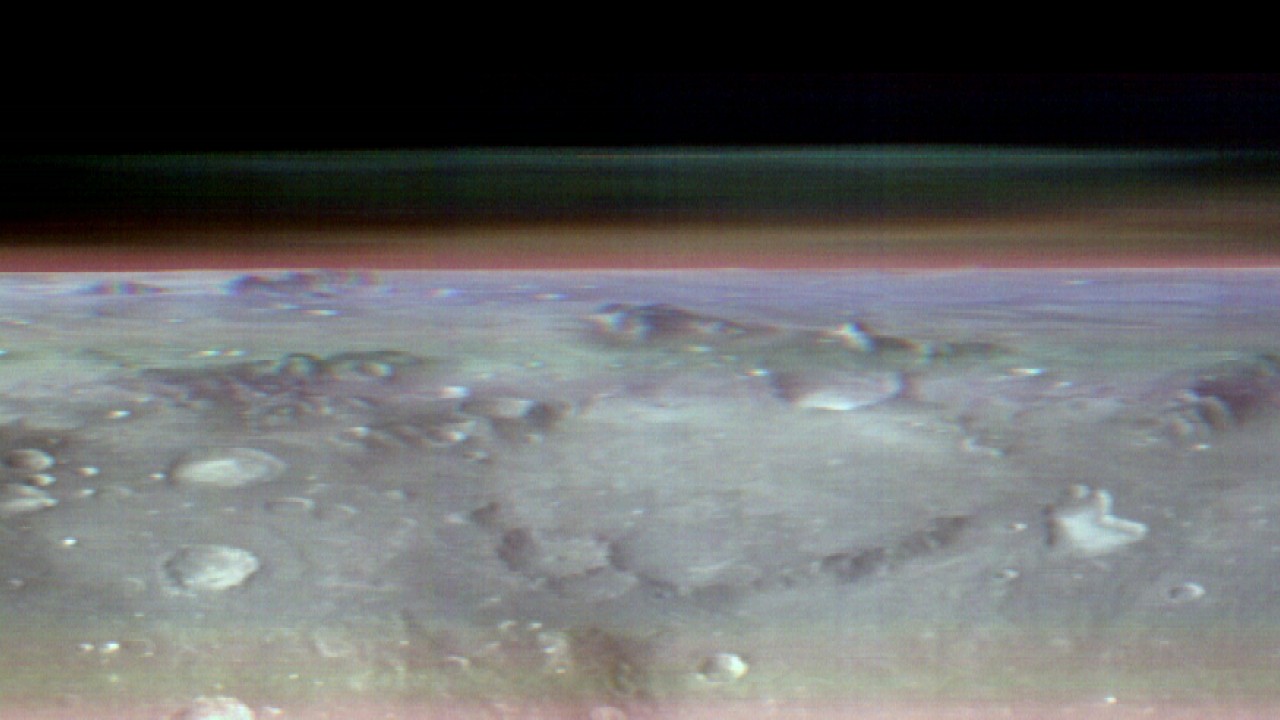Here's what astronauts in orbit around Mars would see from their spacecraft
Deep craters and diverse cloud structures are just some of the features astronauts orbiting Mars could expect to see.
Have you ever wondered what it might be like to view Mars from the vantage point of a spacecraft in orbit above the Red Planet?
New images from NASA's Mars Odyssey Orbiter capture what Mars would look like when viewed from above. Mission scientists recently rotated Odyssey toward the Martian horizon for one complete orbit to capture the new imagery of the Red Planet, revealing deep craters and diverse cloud structures as astronauts orbiting Mars would expect to see them.
"If you were an astronaut, the first thing that would catch your eye are all of these beautiful craters, which, of course, look much different than what you would see on Earth," Laura Kerber, deputy project scientist for the Odyssey mission, said in a video from NASA's Jet Propulsion Laboratory (JPL). "But the second thing you would see, because you're looking at the planet from an angle, is the structure in these beautiful clouds."
Related: See Mars like never before in this amazing new photo from a 20-year-old probe

While the Odyssey orbiter has been maneuvered in different ways, this is the first time the spacecraft has been oriented in this way — generally its camera hangs straight down toward the Martian surface for mapping.
"This time, we had to do something a little more extreme," Kerber explained in the video.
From this new angle, Odyssey documented the planet's curving horizon, cratered surface and atmospheric layers, including diverse clouds ranging from carbon dioxide ice clouds to water ice clouds and dust clouds. The orbiter is equipped with a heat vision camera — called Thermal Emission Imaging System (THEMIS) — which identifies the different kinds of clouds present in Mars' atmosphere, according to the video.
Get the Space.com Newsletter
Breaking space news, the latest updates on rocket launches, skywatching events and more!
The new panoramic images were taken from an altitude of about 250 miles (400 kilometers), which is the same altitude at which the International Space Station flies above Earth.
Launched in April 2001, Odyssey is the longest running spacecraft at Mars. The orbiter will hit 100,000 orbits next year and is undergoing several science initiatives.
"One is a rock-mapping campaign that will help us land future missions more safely on the surface [of Mars]," Kerber explained in the video. "We're also taking advantage of our special dawn-dusk orbit to map clouds, fog, and frost that only exist at certain times a day. And we are also planning our next maneuver to look out at the clouds on the horizon again."
Join our Space Forums to keep talking space on the latest missions, night sky and more! And if you have a news tip, correction or comment, let us know at: community@space.com.

Samantha Mathewson joined Space.com as an intern in the summer of 2016. She received a B.A. in Journalism and Environmental Science at the University of New Haven, in Connecticut. Previously, her work has been published in Nature World News. When not writing or reading about science, Samantha enjoys traveling to new places and taking photos! You can follow her on Twitter @Sam_Ashley13.









